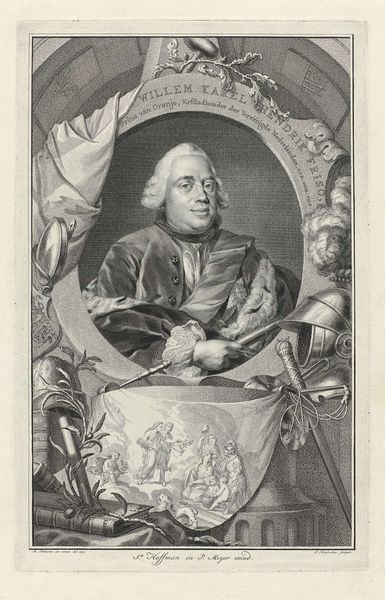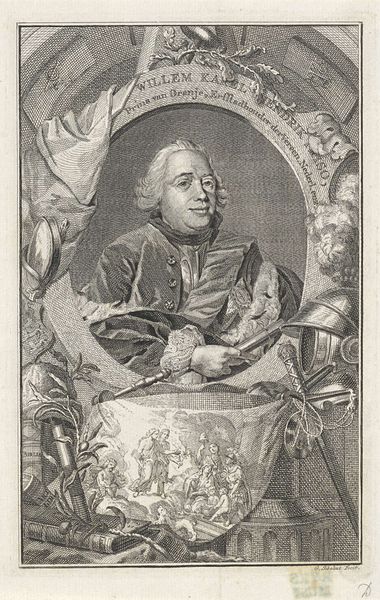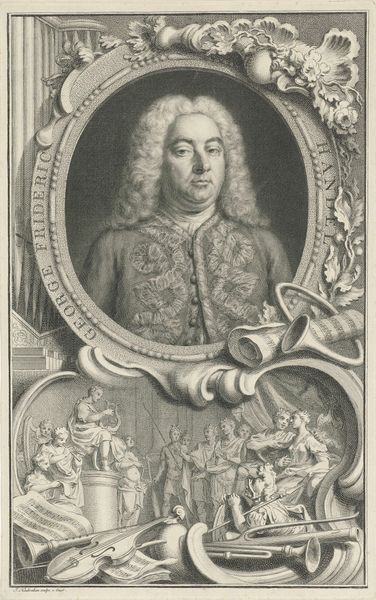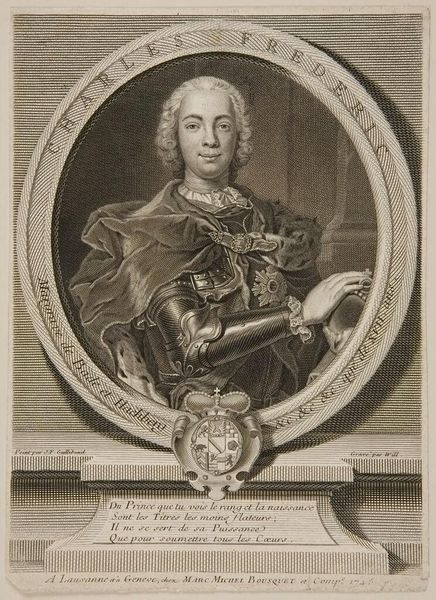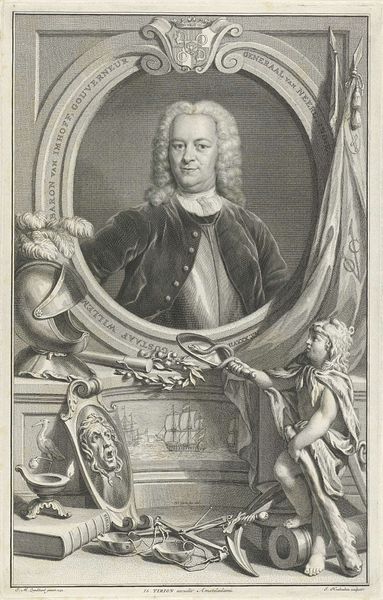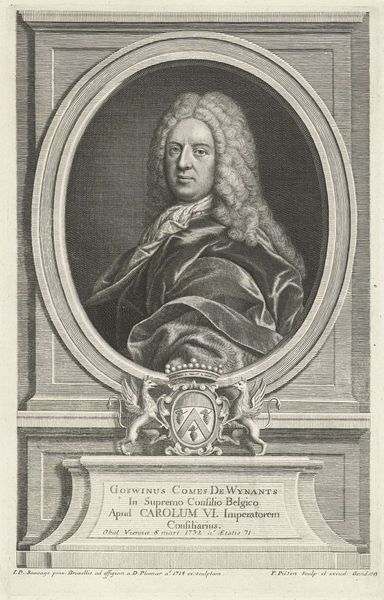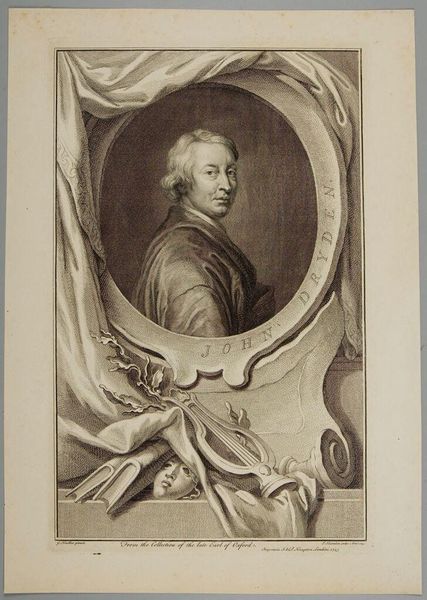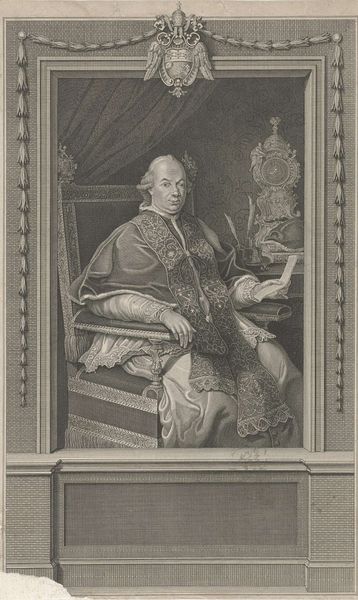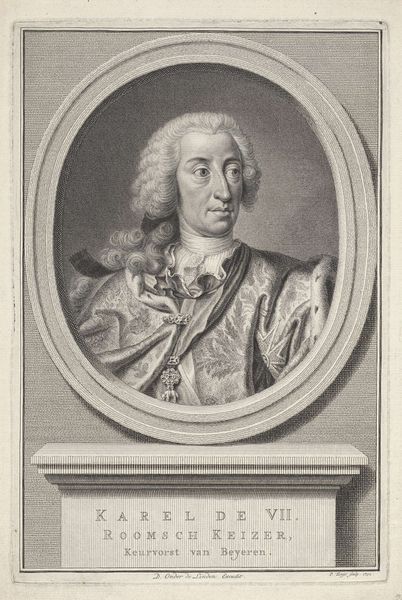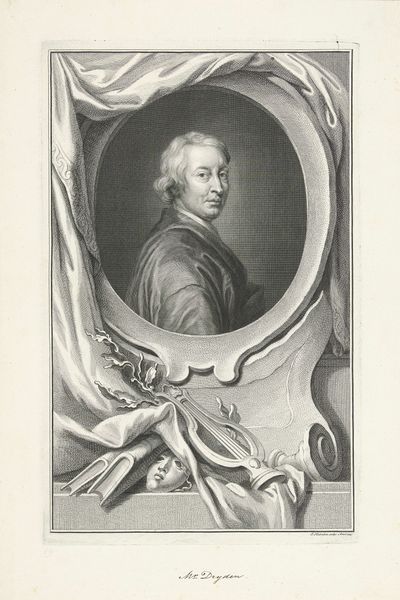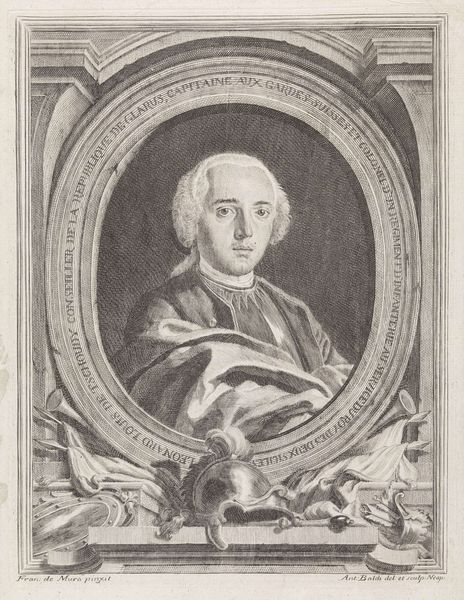
William IV, Prince of Orange, Stadtholder of the Netherlands 1751
0:00
0:00
Copyright: CC0 1.0
Curator: Here we have an engraving of William IV, Prince of Orange, Stadtholder of the Netherlands, by Jacobus Houbraken. Editor: It’s a very formal, almost grandiose portrait, wouldn't you say? All those symbols of power feel a bit overwhelming. Curator: This piece really speaks to the visual language of power in the 18th century. It's filled with iconography meant to project authority, from the armor to the allegorical scene below. Editor: Absolutely, and that scene below... it looks like an idyllic family tableau. How does that connect with his role as a political leader? Curator: The family imagery served to reinforce dynastic claims and portray him as a benevolent leader, invested in the well-being of his people. Editor: Interesting. The artwork's purpose, it seems, was to solidify his image through strategic representation. Curator: Precisely. It reflects the complex interplay between political power and public perception in that era. Editor: Well, seeing it this way, I now have a deeper understanding of the role images play in reinforcing political power structures.
Comments
No comments
Be the first to comment and join the conversation on the ultimate creative platform.
